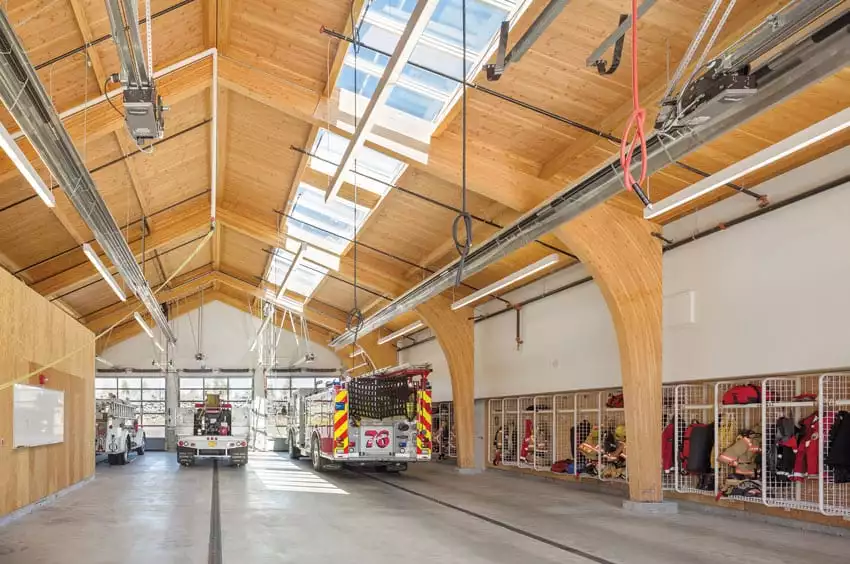We are all aware that fire cannot be bound by regulations and a mismatch in international regulations can make planning and building a fire safe society challenging. It is the opinion of the International Fire Safety Standards (IFSS) Coalition, explains Gary Strong, Chair – IFSS Coalition and RICS Global Building Standards Director, that all buildings should be built and managed – in terms of fire safety – to high standards and the same set of common international principles.
By 2050, the world’s population is set to grow to nine billion and 68% are set to live in cities. As the population expands, the additional housing, hospitals, schools, shops, and infrastructure required will mean that ever more innovative structures will be needed to meet the growing needs of an expanding population.
As part of the drive to meet these needs, building safety remains critically important. Innovation should always consider this. Each country’s approach to building their new cities and re-planning existing cities, will differ. This is equally true for their approaches to building safety and fire safety measures. Due to varying regulations what one country deems acceptable fire measures will not be the same elsewhere. But, as we are all aware, fire itself is not bound by regulations, so this mismatch in regulations can make it challenging. Buildings should be built and managed – in terms of fire safety – to high standards and the same set of common international principles regardless of their location.
One potential barrier is that creating a standardised approach will not be a quick fix. Whilst global leaders could more easily all commit to an agreed international approach for new and existing buildings going forward, like the International Fire Safety Standards (IFSS) Common Principles, retrofitting existing buildings to improved standards will be costly and disruptive and potentially off-putting for many, but necessary to meet public demand.
However, fire safety is never going to be a short-term issue with easy solutions. As climates change, our local communities and environments change, our approach to protect our people, structures, economies and planet against fire will need to adapt. The IFSS Coalition Decade of Action for Fire Safety 2022-2032 sets out some key recommendations about how countries can improve the fire resilience of their structures within this changing climate. Whilst the most important factor is the safety of life, working towards these recommendations also has many benefits for societally important structures, economies and the planet.
Regulation sits at the heart of fire safety and is imperative to reducing fire risk. All governments should review their current laws, regulations, and standards, and identify gaps where they need to improve. This provides opportunities to ensure that their regulations reflect international best practice, whilst taking a holistic approach to meet their national requirements. Regulation should be reviewed regularly, and no laws should be left to become outdated. As our cities will change rapidly in the next 30 years, the laws that protect our structures and those operating within them need to reflect that. To ensure robustness, governments should rely on data, research findings and the latest recommendations from international practitioners and the IFSS Coalition.
With a spate of fires in the mid 2010’s improved regulations are already in place in some countries to protect buildings against fire. It’s crucial that those countries and industry leaders provide examples and share best practice, to demonstrate the value of their approach to others. Governments alone cannot change the way the world views fire safety, industry also has an influential role. New structures can be promoted as the tallest or most unusual but should equally be promoted for how they aid, protect and serve those who use them – innovation comes in many forms.
While a building may be viewed as static, risks are not, and the risk of fire exists throughout a building’s lifespan. The vast array of property globally, easily illustrates that there can never be one a one size fits all, especially as buildings need to fit the needs of the users and location, but we believe that industry can agree to raise minimum global standards and improve ways of working.
Built environment professionals who interact with or work on fire safety aspects of buildings, should all have globally consistent training, access to the very latest research and best practice, allowing them to take their skills all over the world and apply them within their country limits. Globally, industry needs to support the need for international research, standardisation, and training in the latest fire safety technologies that can improve the fire resilience of new and old buildings. They should also promote fire safety ownership and accountability so there are clear lines of responsibility. Structures may stand for hundreds of years, but just like people, they need to continually adapt. For fire safety, only a global collaboration and agreement will bring timely results.


